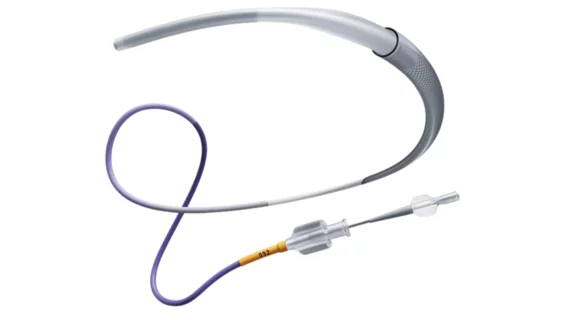Johnson & Johnson MedTech launches new large-bore catheter system for stroke
Johnson & Johnson MedTech has launched a new next-generation catheter to be used when treating acute ischemic stroke patients.
The Cereglide 92 Catheter System includes a 0.92” catheter as well as the company’s Innerglide 9 delivery aid. It was designed to assist clinicians when inserting and guiding interventional devices in a patient’s neurovascular system, providing a larger lumen that delivers distal support when treating hemorrhagic complications such as aneurysms. In addition, it provides full catheter visibility under fluoroscopy.
This new device represents the latest addition to Johnson & Johnson MedTech’s growing neurovascular portfolio, joining the Cereglide 71, Prowler EX and Embotrap III devices. It is now available throughout the United States.
“Johnson & Johnson MedTech is continuing to innovate to help address the access challenges physicians face during mechanical thrombectomy procedures with the launch of Cereglide 92,” Mark Dickinson, worldwide president of the neurovascular division at Johnson & Johnson MedTech, said in a statement. “The Cereglide 92 Catheter System is the latest innovation in our Cereglide and ischemic stroke suite of technologies designed to assist physicians in treating their patients and maximizing procedural outcomes, to ultimately change the trajectory of stroke.”
“Vessel tortuosity and other anatomical challenges are present in approximately 50% of mechanical thrombectomy cases, which can increase procedure time or prevent ability to treat,” added Brian Jankowitz, MD, chief of neurosurgery and co-chair of the stroke and neurovascular program at the Hackensack Meridian Neuroscience Institute at JFK University Medical Center. “As an early user of Cereglide 92 and Innerglide 9, this super large-bore catheter system helps provide quick and seamless access to the M1 with the benefit of flow control, allowing us to rapidly reperfuse the patient and extend the benefits of next generation stroke technology to more patients.”
This announcement comes just one day after media reports suggested Johnson & Johnson was looking to sell its stroke business for more than $1 billion.

